The Place du Châtelet is a historic square in the heart of Paris, at the site of a former fortress, the Grand Châtelet. The square is flanked on either side by a theatre.
History
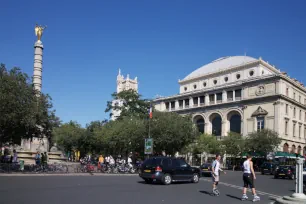
Located on the border of the first and fourth arrondissements of Paris, Place du Châtelet sits on the right bank of the River Seine.
The public square stands on the land that was once the site of the medieval fortress of Grand Châtelet. The fortress was built around 1130 by King Louis VI at the Pont au Change (a bridge) to defend the Île de la Cité, Paris’s historic center.
Later, under the rule of Phillippe-Auguste in the twelfth century, the fortress became one of the city’s most dreaded prisons and home to the Prévôté (provost marshal) of Paris, a subdivision of the tribunal, presided over by the Bailli, a representative of the king. It is said that some of the worst tortures known to mankind were inflicted upon prisoners at this facility.
The area around the fortress was one of the city’s most dangerous, and criminality was rampant in the neighborhood. During the rule of Napoleon, in the year 1808, the whole neighborhood including the Grand Châtelet was destroyed in an attempt to eradicate the criminality. After the area was cleared, the idea for a public square was devised and carried out.
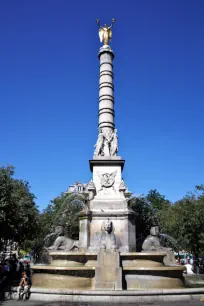
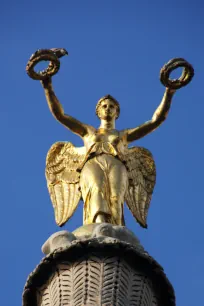
Palmier Fountain
Upon approaching Place du Châtelet, the first thing one will notice is the large fountain that sits in the center. The fountain is known by several names: Fontaine de la Victoire (Victory Fountain), Fontaine du Châtelet (Châtelet fountain) and Fontaine du Palmier (Palm Tree Fountain). The latter name stems from the shape of the capital at the top of the column of the fountain.
The fountain was built in 1808 and was erected to pay homage to Napoleon’s victories. Gilded names on the column in the center of the fountain commemorate twelve famous battles from his campaigns: Lodi (1796, Italy), Arcole (1796, Italy), Rivoli (1797, Italy), Pyramids (1798, Egypt), Mont-Thabor (1799, Ottoman Empire), Marengo (1800, Italy), Austerlitz (1805, Austrian Empire), Ulm (1805, Bavaria), Iéna (1806, Saxony), Eylau (1807, Prussia), Danzig (1807, Prussia), Friedland (1807, Prussia).
A golden winged figure sits atop the 18-meter-tall (59 ft.) column. The statue, designed by the French sculptor Simone Boizot, symbolizes Victory. The sculptor also created the four statues that stand around the column on the pedestal. They symbolize Vigilance, Justice, Strength and Prudence.
A number of sphinxes surround the foot of the column. These were added much later, in 1858, when the square was rearranged as a result of Haussmann’s renovation of Paris. French architect Gabriel Davioud placed the whole monument, including its pedestal, on a large circular base with basins, which he adorned with four large status of sphinxes, created by Henri Jacquemart in white stone. Water spouts from the mouth of these sphinxes into the basins.
Theaters
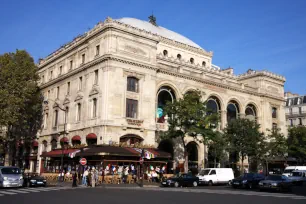
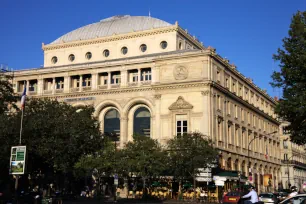
On either side of the Place du Châtelet sits a theatre. The first, Théâtre du Châtelet, is reserved for music and dance and has been host to myriad operatic and ballet productions and, more recently, a number of popular Broadway-style musicals.
In contrast, the Théâtre de la Ville, which sits on the other side of the square, is dedicated to theatrical performances, both classic and contemporary. This theatre was once owned by actress Sarah Bernhardt, who was born and died in Paris and lived much of her life there.
The two theaters were designed by Gabriel Davioud, and built around 1862 in an effort to attract more upper-class people to the area. The two buildings are almost mirror images of each other.
It’s quite easy to reach the Place du Châtelet, as underneath this public square lies one of the largest transportation stations in Paris, with five metro lines all converging under the square.
- Next: Saint-Sulpice
- More Paris Public Squares
- More Sights & Attractions in Paris

